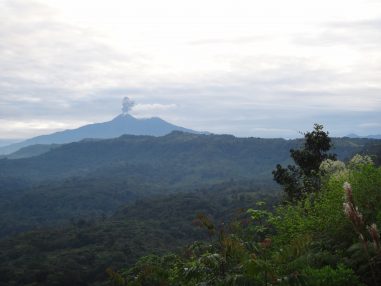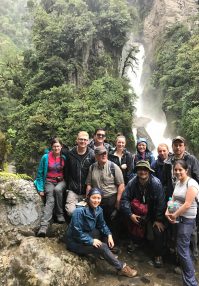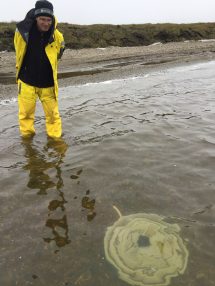Exploring the Link Between Amazon Ecology and Geology in Ecuador | Studying Flux in Arctic Lagoons
November 20, 2017


A 3-credit course in Dynamic Field Stratigraphy (GEO 391) explored the diverse geologic record of the Andes of Ecuador, with emphasis on the
sedimentary, stratigraphic, climatic and biological consequences of Andean uplift.
The course culminated in a 10- day field trip (April–May, 2017) across
the orogenic belt, from the Amazon basin in the east to the Pacific coast in the west. As a region with some of the highest biodiversity on Earth, there remain key questions regarding the interactions of geological processes (tectonic uplift, magmatism, erosion, sedimentation) with the Amazonian biological and climate system. UT students joined forces with Ecuadorian colleagues and worked with UT professors and researchers Brian Horton, Ron Steel and Cornel Olariu to assess the long-term sedimentary and structural evolution of the Oriente foreland basin, Inter-Andean Valley, magmatic arc and western forearc basin, with consideration of active magmatism, active faulting and varied hydrocarbon systems. Several additional highlights included a bewildering array of flora and fauna, huge waterfalls, and the unexpected viewing of an active volcanic eruption from a safe distance. The trip was made possible by funding from Chevron.
Brian Horton
Professor, Department of Geological Sciences
Research Professor, Institute for Geophysics
Studying Flux in Arctic Lagoons

In collaboration with colleagues from the University of Texas Marine Science Institute (MSI), we are trying to understand groundwater fluxes in Arctic lagoons. Groundwater is an unknown component of the coastal water cycle, and it could be an important pathway for nutrients and carbon from land going to the sea. The picture on the left shows Professor Jim McClelland from the MSI. He is looking at a seepage meter which captures and measures groundwater seepage from the sediment. The trip also involved measuring a dissolved gas tracer in seawater across Kaktovik lagoon. The nearby village was a popular hang out spot for polar bears. There were at least 21 bears in the village while we were there!
